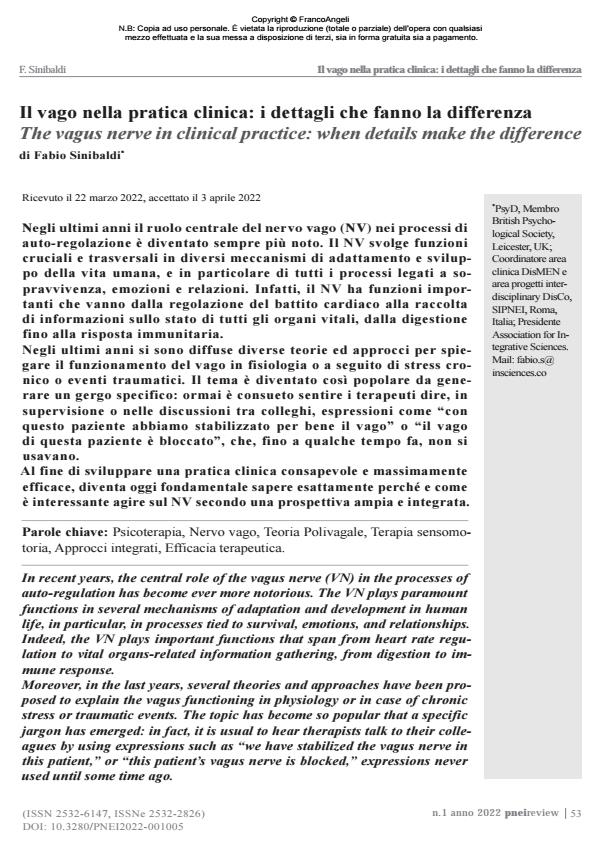The vagus nerve in clinical practice: when details make the difference
Journal title PNEI REVIEW
Author/s Fabio Sinibaldi
Publishing Year 2022 Issue 2022/1
Language Italian Pages 14 P. 53-66 File size 157 KB
DOI 10.3280/PNEI2022-001005
DOI is like a bar code for intellectual property: to have more infomation
click here
Below, you can see the article first page
If you want to buy this article in PDF format, you can do it, following the instructions to buy download credits

FrancoAngeli is member of Publishers International Linking Association, Inc (PILA), a not-for-profit association which run the CrossRef service enabling links to and from online scholarly content.
In recent years, the central role of the vagus nerve (VN) in the processes of auto-regulation has become ever more notorious. The VN plays paramount functions in several mechanisms of adaptation and development in human life, in particular, in processes tied to survival, emotions, and relationships. Indeed, the VN plays important functions that span from heart rate regulation to vital organs-related information gathering, from digestion to immune response. Moreover, in the last years, several theories and approaches have been proposed to explain the vagus functioning in physiology or in case of chronic stress or traumatic events. The topic has become so popular that a specific jargon has emerged: in fact, it is usual to hear therapists talk to their colleagues by using expressions such as "we have stabilized the vagus nerve in this patient," or "this patient’s vagus nerve is blocked," expressions never used until some time ago To develop a conscious and maximally efficient clinical practice, today it becomes paramount to know exactly why and how it is useful affect the VN through an integrative and wide prospective.
Keywords: Psychotherapy, Vagus nerve, Polyvagal Theory, Sensorimotor therapy, Integrative approaches, Therapeutic efficacy.
Fabio Sinibaldi, Il vago nella pratica clinica: i dettagli che fanno la differenza in "PNEI REVIEW" 1/2022, pp 53-66, DOI: 10.3280/PNEI2022-001005